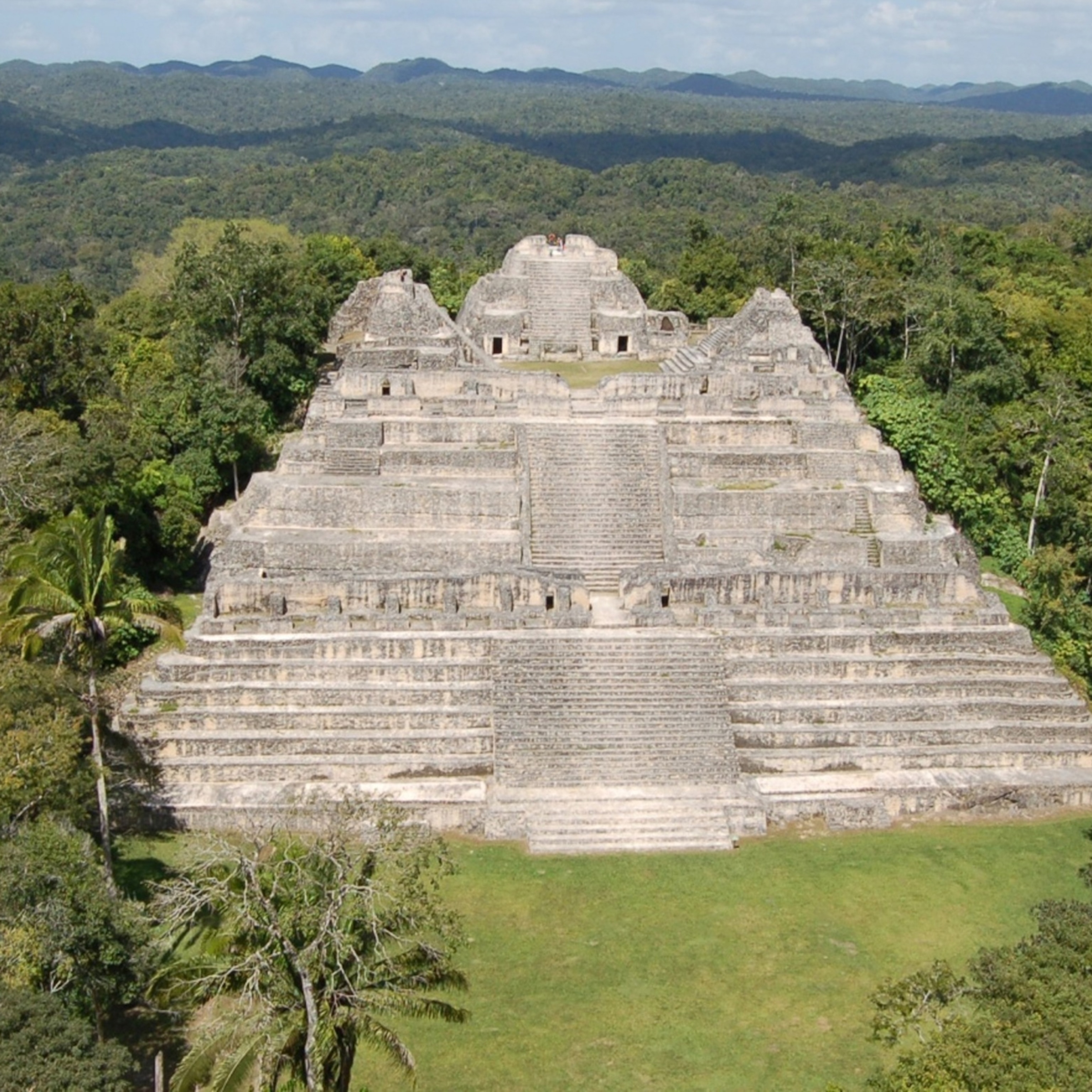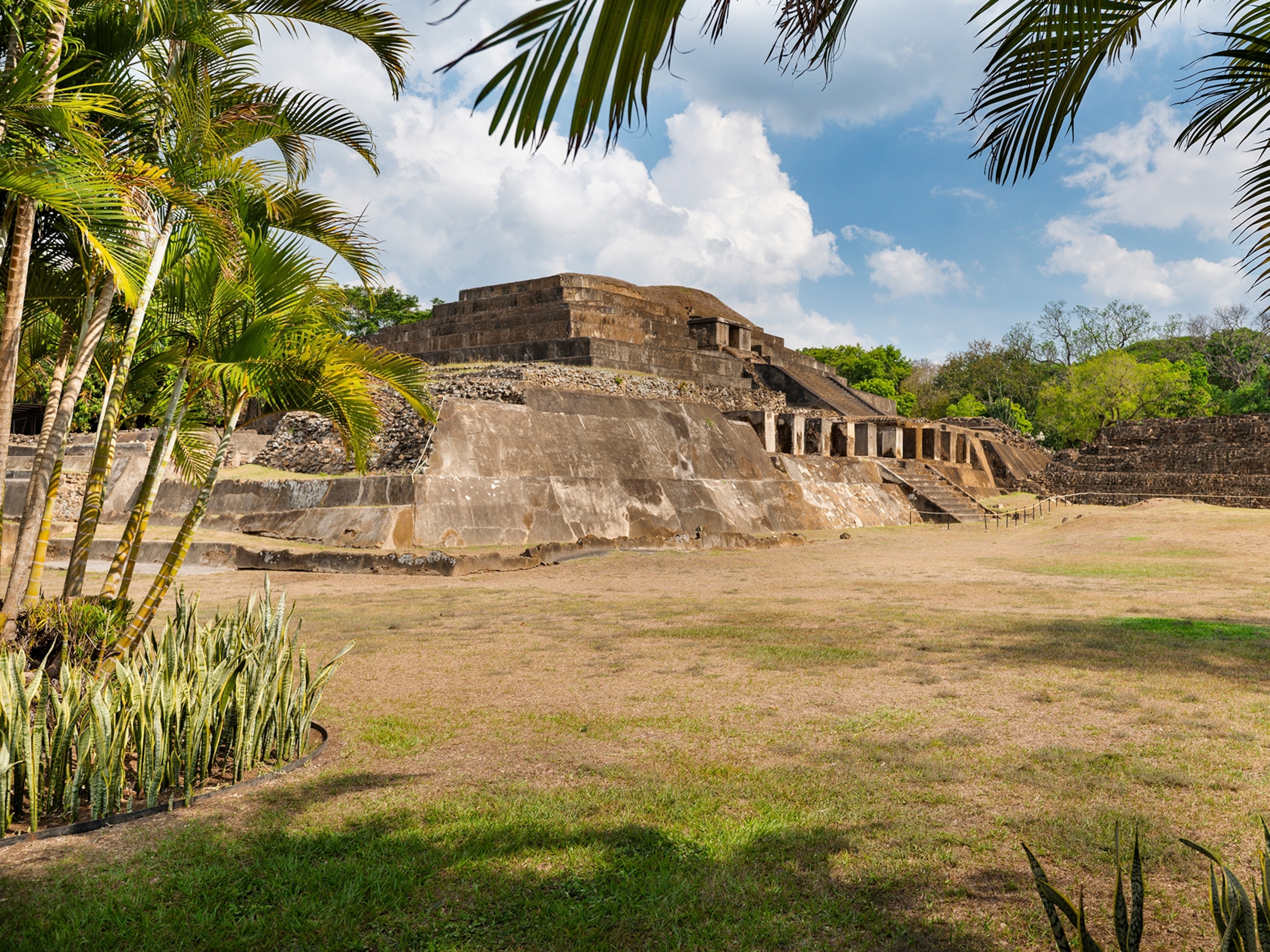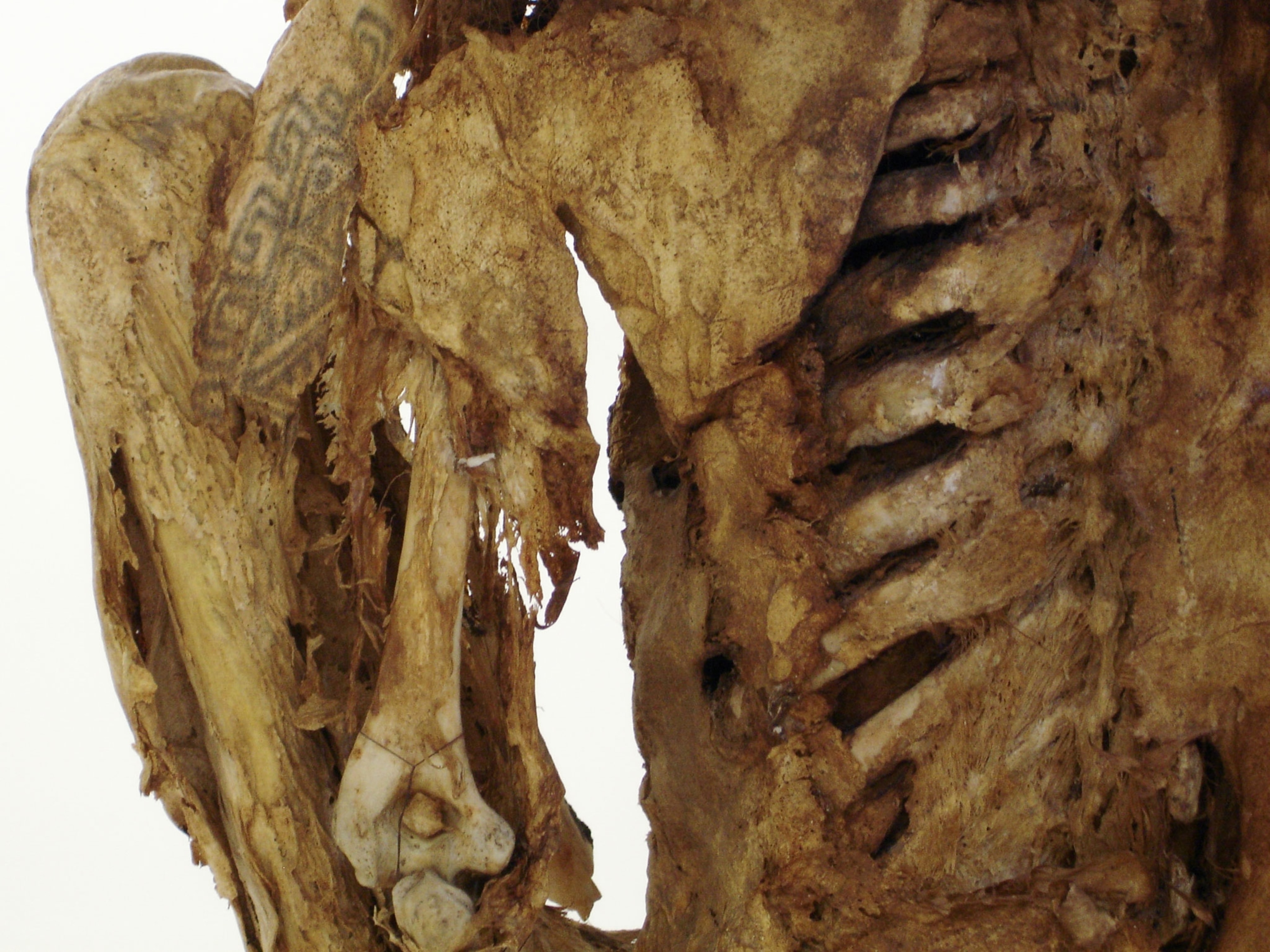Explore the palaces and tombs of these ‘lost cities’ across the Americas
Remnants of early American civilizations, uncovered after centuries of obscurity, will dazzle in their complexity and scale.
What does it mean to say a city is “lost”? We know where to find the remains of most great ancient cities, and many places commonly considered to have been lost were not unknown to regional societies.
What is lost typically is not the location of a city so much as its story, its life in the world. Ancient cities and towns held in their crowded streets entire cultures: rulers and workers, foods and fights, markets and temples, children and pets. When the cities faded, those human experiences faded, too.
An archaeologist’s job is to reimagine those stories, brick by brick. Around the world, archaeologists are still uncovering major urban centers that testify to the sophistication of early cultures. New discoveries made with lidar, an aerial remote-sensing method, have revealed hundreds of Olmec and Aztec ceremonial centers across Mexico.
But challenges to the preservation of these ancient cities remain. Mining and drilling for oil and gas threatens the delicate Ancient Puebloan sites in New Mexico’s Chaco Canyon, which led to President Joe Biden proposing a 20-year ban on drilling within 10 miles of the settlement of intricately constructed sandstone houses and rounded, rock-lined ceremonial pits.
“Chaco Canyon is a sacred place that holds deep meaning for the Indigenous peoples whose ancestors lived, worked, and thrived in that high desert community,” U.S. Secretary of the Interior Deb Haaland said in a statement. “Now is the time to consider more enduring protections for the living landscape that is Chaco.”
Exploring Chaco and other ancient settlements in the Americas gives travelers a lens on the past—and a glimpse of why conserving these places is important. Here are three once-teeming cities in North and Central America that passed into obscurity, but are now very much on the map for archaeologists, preservationists, and travelers.
Chaco Canyon: Ancient Pueblo culture in New Mexico
From the 800s into the 1200s A.D., Ancestral Puebloan people farmed, traded, and conducted religious ceremonies in the high desert around Chaco Canyon, in present day New Mexico. To water their crops of corn, squash, and beans, residents harnessed the intermittent flow of local streams through canals and ditches. Traders brought in exotic goods such as scarlet macaws and cocoa from Mesoamerican peoples to the south.
Chacoan civilization began to dissolve around 1140, perhaps due to a series of severe droughts. By the end of the century, the area was completely abandoned. Although Native peoples, including the Ute and Shoshone, moved into the area in the following centuries, the first documented journey into Chaco Canyon was a 1823 expedition in which men under Mexican rule uncovered the ancient ruins.
The community of Pueblo Bonito is the most famous of the Chacoan towns, and the top attraction at Chaco Culture National Historical Park. It’s known as a “great house,” but to modern eyes it resembles a D-shaped apartment complex. Masonry buildings up to four stories high may have held more than 600 rooms used for living quarters, storage, ceremonies, and burials. Walls were held together with adobe, plastered and white-washed on the insides, and sometimes adorned with painted designs.
More than 30 kivas, circular underground chambers, hosted Ancestral Puebloan religious ceremonies. By the 13th century, for reasons yet unknown, the Chacoans began to leave their settlements for other parts of the Southwest.
Chacoan people had no written language, so much of what scholars know about their society comes from burials. One burial room, for instance, held 13 presumably high-ranking bodies surrounded by thousands of turquoise beads, shells, bowls, and pitchers. DNA analysis showed that many of the individuals were related through their mothers or grandmothers, indicating Pueblo Bonito may have been ruled by a matrilineal dynasty.
(Explore the gilded treasures of these little-known Ancient Egyptian tombs.)
Travelers can explore the UNESCO World Heritage site via guided tours, ranger walks through Pueblo Bonito, hiking and biking trails, camping, and evening campfire talks. The nine-mile Canyon Loop Drive includes stops at multiple ruins, including Pueblo Bonito and Chetro Ketl, the largest and most intricate villages. Four backcountry hiking trails lead visitors to remote Chacoan sites, passing ancient roads, petroglyphs, stairways, and spectacular overlooks of the valley.
Chaco is also recognized as an International Dark Sky Park. More than 99 percent of the park has no permanent outdoor lighting, ensuring prime stargazing conditions. Periodic special events include astronomy programs and telescope viewing of the dazzling night sky.
Caracol: A Mayan metropolis in Belize
In 1937, a woodcutter encountered carved, standing stone monuments in the western forests of what was then British Honduras, now known as Belize. Archaeologists eventually uncovered more monuments, as well as tombs, terraces, and residences in the remote site. The woodcutter had rediscovered the city now known by the Spanish name of Caracol (meaning “snail” or “shell,” a reference to the winding road that led to the site).
Further studies revealed the city to be one of the major metropolises of the great Maya Empire that stretched from Mexico south to Nicaragua. Today, Caracol is one of the most best-preserved Maya sites in Belize.
A widespread urban center more than 12 miles across, Caracol at its high point (A.D. 250 to 950) held at least 100,000 inhabitants. Most Caracoleños lived in dispersed residential groups nestled among terraced agricultural fields. The Maya elite lived in the city’s center, which held a raised royal palace and formal plaza. Like many other Maya cities, Caracol features stone ball courts, where players vied to keep a solid rubber ball in the air.
The main attraction is the “Caana” or “Sky Place,” a 140-foot-tall pyramid that rises from the jungle floor and holds four palaces and three temples. The palace rooms were originally coated with white stucco and decorated with red paint.
(Who built the great city of Teotihuacan?)
Among the most intriguing discoveries in Caracol are indications that women held high ranks in this hierarchical society. Though women are rarely pictured in the area’s monuments, they were honored with burials in elite tombs within the city. Some pictographs, showing individuals in androgynous skirted maize god costumes, have spurred debates on their gender.
Between A.D. 880s and 1000, Caracol was abandoned. Unlike other ancient cities, it did not fall to drought. Indications are that late Caracoleño society became increasingly stratified, with the elite hoarding most of the goods. At the end of the ninth century, the palace burned. Social unrest, and possibly outside attackers, may have spelled the end of Caracol’s long run as a Maya power.
Visitors reach Caracol via a long, challenging drive on unpaved roads south from San Ignacio, Santa Elena, or Georgeville, cities along the Western Highway. A project to pave the roads leading to Caracol began in 2020 and is underway.
The reward of the journey is 25,000 acres of wonder, with three plazas surrounding a central acropolis, two ball courts, and a number of smaller structures. At the visitor’s center near the entrance, you can see artifacts found at the site on display, as well as diagrams and photographs from decades of excavations. Booking a tour of the grounds in advance at San Ignacio or San Elena is recommended.
Cahokia: Mounds built by the Midwest’s Mississippi people
Just four miles from present day St. Louis, Missouri, the Cahokia settlement arose from the rich floodplains at the confluence of the Mississippi, Missouri, and Illinois rivers. Village farmers lived in these fertile lands from as early as A.D. 600, cultivating squash, sunflowers, and then corn. In those years, Cahokia was the largest city north of Mexico, with a population between 10,000 and 20,000, rivaling that of European cities of the era.
The Cahokian community began to decline during the 13th century A.D. and the site was completely abandoned by 1350. Several hundred years passed before French explorers documented the find in the 1600s.
Today, visitors to Cahokia Mounds State Historic Site see vegetation-covered hillocks of earth, but the site once supported at least 100 raised structures. An immense central plaza spanned the equivalent of 45 football fields.
(Why the Nasca lines are among Peru’s greatest mysteries.)
The largest construction is a terraced 98-foot-tall structure known as Monks Mound, named for the Trappist monks who lived nearby in the 1800s. Its base, occupying 14 acres, is larger than the footprint of Egypt’s Great Pyramid of Khufu. More than 200 million cubic feet of earth, mined from still visible pits, went into its construction. This kind of organized effort typically requires a centralized, hierarchical society.
Historians know little of the city’s rulers or history, but evidence at the site shows that it was a cosmopolitan center of trade, crafts, and agriculture. It was occupied by members of the Mississippian people, who exchanged goods with others as far north as modern-day Wisconsin, and possibly with Mesoamerican cultures to the south. Like the Mesoamericans, the Cahokians enjoyed games, including one known as “chunkey” where players threw spears at rolling stone disks.
Similar to cultures to the south, including the Aztecs, Cahokian burials may have included human sacrifices. Mound 72 at the site holds dozens of bodies, male and female, some of them decapitated.
Beginning around A.D. 1175, something or someone began to threaten the Cahokians, judging by the protective wooden palisades they set up around the city center. A cooling climate and stress on the local environment might also have made the city less livable. By 1350 or so, the population had dispersed. Grass grew over some of the mounds, farmers flattened others, and the U.S. government cut a highway through the middle of the city in the mid-1900s.
Today the remains of Cahokia are a UNESCO World Heritage site and a preeminent example of Mississippian culture. Visitors can explore the park via a 10-mile hiking loop around the entire site or a quick climb up Monks Mound, the largest earthwork in North America (it’s 100 feet high and around 1,000 feet long). An interpretive center offers trail maps, audio tour devices, and a museum of Mississippian culture with a life-size model of a village.
This article was adapted from National Geographic Lost Cities of the Ancient World, which takes readers on an epic journey through ancient civilizations and their archaeological wonders.






